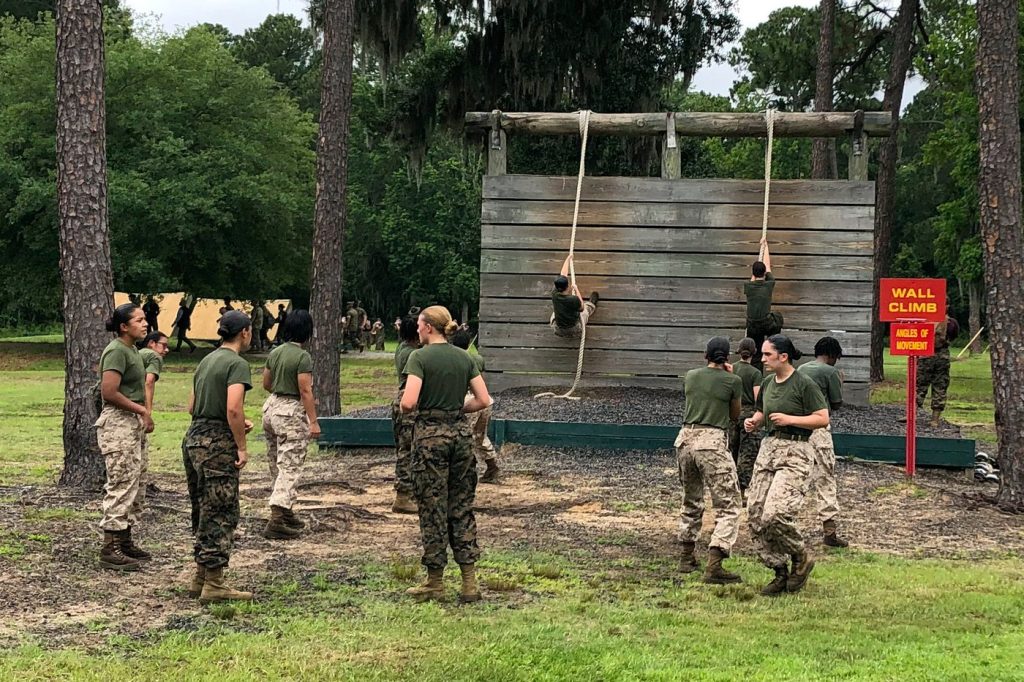The recent decision by the Defense Secretary, Pete Hegseth, to review military standards regarding combat, physical fitness, and appearance has sparked a significant debate within the U.S. military. This move has the potential to create a wide range of differing rules among the branches of the armed services and raises a pivotal question: should military policies adhere to a uniform approach, or should they reflect the unique characteristics of each service, evolving social norms, and current recruiting challenges?
Hegseth has openly expressed his opposition to the presence of women in combat roles and has criticized what he perceives as the lowering of standards to accommodate them. He is a fervent advocate for uniformity in standards, irrespective of gender, and military officials are preparing for possible changes to existing policies as the review process unfolds. In a memo dated March 12, Hegseth instructed the undersecretary for personnel to compile information concerning military standards related to physical fitness, body composition, and grooming, explicitly mentioning facial hair.
In his memo, Hegseth emphasized the importance of maintaining rigorous standards that allow military personnel to effectively protect American interests. However, this comprehensive review of standards, particularly focusing on changes instituted since January 1, 2015—when the Defense Department opened all combat roles to women—has raised concerns about potential backlash against female service members who have successfully served on the frontlines.
The implications of Hegseth’s initiative prompt further questions about whether he aims to standardize fitness tests across all services and make them universal in nature, or whether he will establish minimum benchmarks while allowing individual services to have more stringent requirements based on their needs. The elimination of current age- and gender-adjusted scoring systems for fitness tests could adversely affect retention and recruitment if service members are subjected to sudden and significantly tougher standards.
Historically, the U.S. military has operated under a dual system of physical fitness standards. This system comprises: a routine annual fitness test with varying requirements based on gender and age, and more rigorous standards for specific roles such as combat, special operations, and infantry, which are equivalent for all individuals in those roles.
Currently, each military service employs its own physical fitness testing standards. For instance, scoring parameters are adjusted for age and gender; a 20-year-old male has a different running time requirement compared to older males or females of any age. Over время, these fitness tests have evolved from simpler versions, which included running, push-ups, and sit-ups, to more comprehensive assessments. For example, the U.S. Air Force now provides options between a 1.5-mile run or a sprint, while other branches occasionally permit cycling or rowing as cardio substitutes.
The Army and Marine Corps have more elaborate testing protocols. The Army has integrated a six-event fitness test that includes tasks such as dead lifts and sprint/drag/carry challenges, meant to mirror real-world military scenarios. An earlier initiative to implement gender and age-neutral scoring was canceled after identifying potential issues through research. The Marine Corps administers two tests annually; one comprising a three-mile run, pull-ups, and planks, while the other focuses on a combat fitness test that simulates operational conditions, including obstacle navigation and casualty drag techniques.
Moreover, certain military occupations have distinctly higher physical and mental requirements, with uniform standards across genders and ages for positions like special operations and infantry. Following the Defense Department's policy change allowing female personnel in all combat roles, the Army established specific fitness benchmarks for various military jobs, maintaining gender- and age-neutral criteria.
Throughout the years, military standards have undergone adjustments influenced by diverse factors, such as cultural shifts, recruiting needs, and evolving societal norms. Struggles with recruitment, particularly among younger demographics with potentially less academic preparation, have necessitated adaptations. For example, the U.S. Navy began enlisting individuals who scored lower on the Armed Services Qualification Test and even those without a high school diploma in 2022, citing the requirement to fill essential roles.
While Hegseth's focus has primarily been on physical criteria, there have also been notable changes in policies concerning grooming, including allowances for various hairstyles for women and the acceptance of beards under specific conditions. Moreover, the military has recently relaxed tattoo regulations, allowing for more visible tattoos.










